A Beginners Guide to Lead Generation
A Beginners Guide to Lead Generation
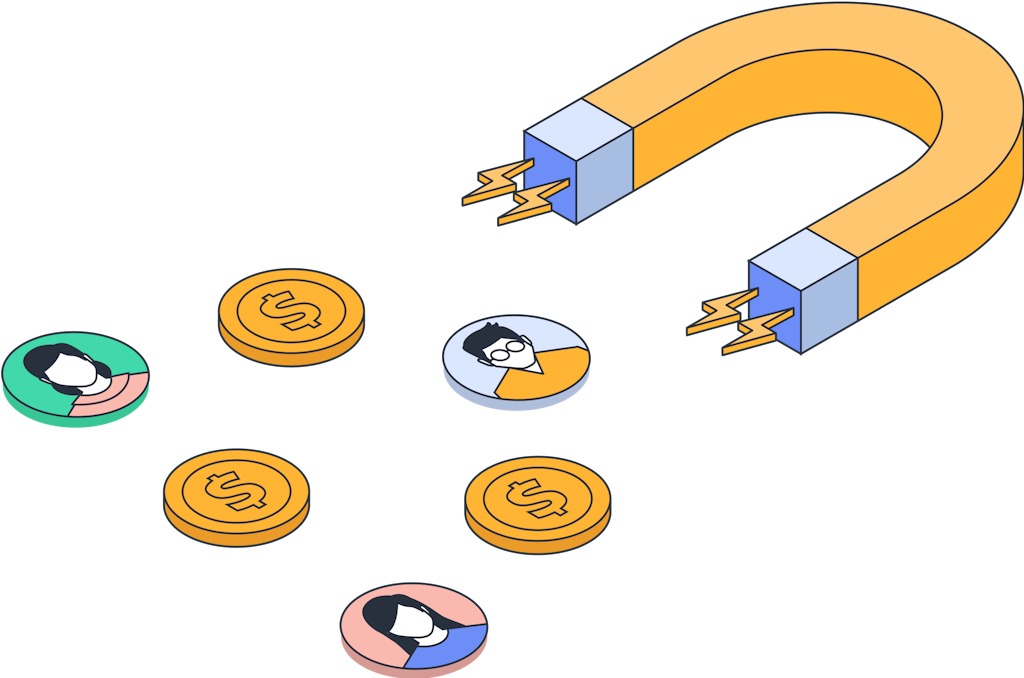
What Are Leads?
What Are Leads?
A lead is an individual or organization with a certain level of interest in your company's offerings. The lead typically expresses this interest by providing contact information or engaging with the company through various touchpoints, such as subscribing to a newsletter, filling out a contact form, attending a webinar, or following the company's social media accounts. The data collected from these interactions allows your business to initiate and nurture a relationship with potential customers.

Types of leads
There are different types of leads, each representing a different stage of readiness to make a purchase. Here are some common types of leads:
Marketing Qualified Leads (MQLs)
Marketing Qualified Leads (MQLs)
These leads have shown interest in your company's content or engaged with specific marketing campaigns, indicating they are in the early stages of the buying process.
Product Qualified Leads (PQLs)
Product Qualified Leads (PQLs)
These leads have interacted with your company's product in some way, such as signing up for a free trial. Their engagement with the product indicates a higher level of interest and a potential fit for your company's offerings.
Sales Qualified Leads (SQLs)
Sales Qualified Leads (SQLs)
These leads have been vetted and deemed ready for direct engagement with the sales team. They have shown a significant level of interest and are more likely to convert into paying customers.
Each lead type requires a tailored approach and nurturing to effectively guide them through the buyer's journey.
What is Lead Generation
What is Lead Generation
Lead generation is the strategic process of attracting and identifying potential customers for a business's products or services. It involves capturing the interest of individuals who have shown genuine curiosity about what the company offers, aiming to convert them into paying customers.
For instance, if you have a pet store, lead generation would involve reaching out to pet lovers who visit your website, subscribe to your pet care tips, or inquire about your products. By nurturing these leads with special offers or helpful information, you can turn them into loyal customers who keep coming back for more, fueling the growth of your pet store.
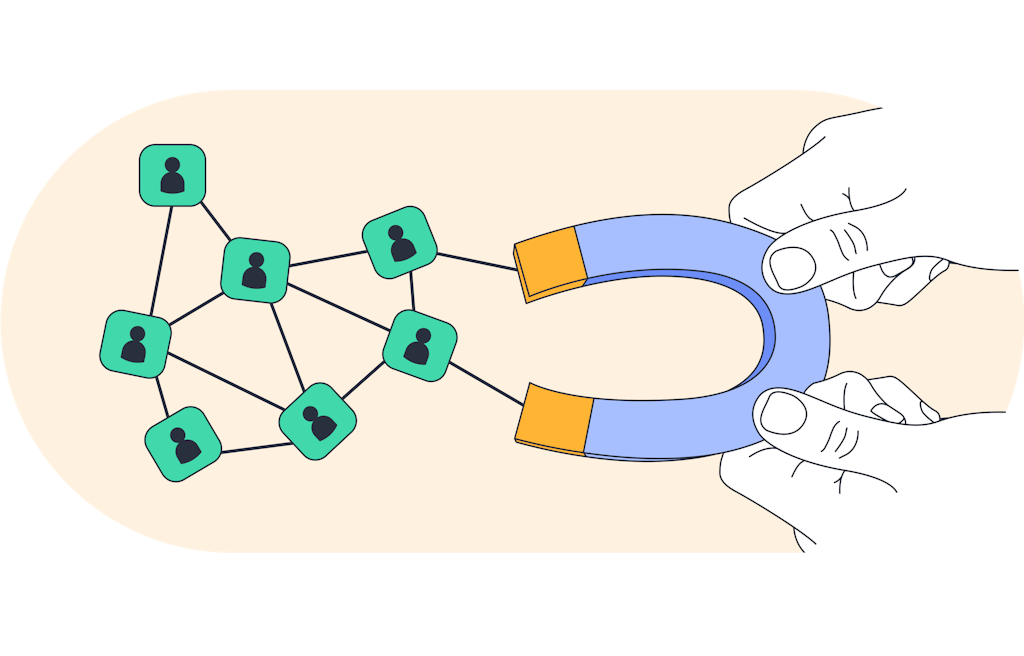
Why Is Lead Generation Important?
Why Is Lead Generation Important?
Lead generation is pivotal in modern business strategies, serving as the cornerstone of customer acquisition and sustainable growth. Lead generation provides crucial benefits that drive businesses toward success by attracting, engaging, and capturing potential customers who express genuine interest in a product, service, or brand. Here are the four goals of lead generation:in
Attracting, engaging, and capturing potential customers (leads)
Attracting, engaging, and capturing potential customers (leads)
Building a pipeline of qualified prospects
Building a pipeline of qualified prospects
Optimizing lead conversion rates and shortening the sales cycle
Optimizing lead conversion rates and shortening the sales cycle
Achieving sustainable business growth and success
Achieving sustainable business growth and success
Without effective lead generation, businesses may struggle to connect with their target audience and miss out on valuable opportunities for expansion and success.
See the magic for yourself
See the magic for yourself
Why waste time on prospects that don't convert?
Get a free trial or book a personalized demo.
Start Now Why waste time on prospects that don't convert?
Get a free trial or book a personalized demo.
Free Trial
Dedicated CSM
Global Coverage
GDPR compliant
Types of Lead-Generation
Types of Lead-Generation
You have many lead-generation activities to connect with potential customers and boost your business effectively. Here are some powerful methods you can employ:
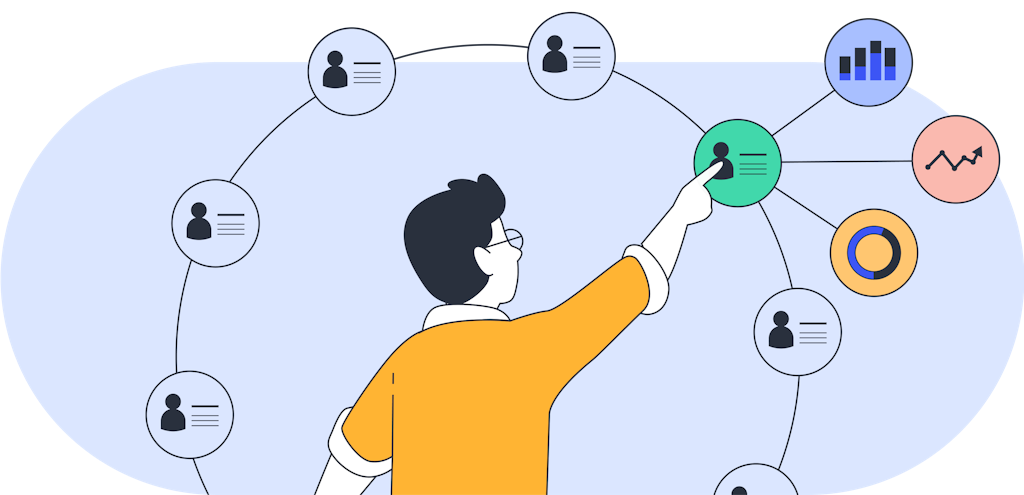
1. Email Marketing
Email marketing is a cost-effective and efficient way to reach many potential customers, boosting your brand's visibility and driving sales. This approach involves building an email list of interested individuals and sending them targeted messages, exclusive offers, and valuable content.
2. Social Media
Using social media for lead generation involves engaging with your audience on platforms like Facebook, Instagram, and LinkedIn. Social media lets you connect with your audience in real-time, listen to their feedback, and understand their preferences.
3. Search Engine Optimization (SEO)
When potential customers search for products or services related to your business, appearing on the first page of search results increases the likelihood of them clicking through to your website. You can attract organic traffic and generate leads by creating valuable and relevant content, optimizing keywords, and improving website usability.
4. Paid Advertising
Paid advertising, such as Google Ads or social media ads, allows you to place targeted advertisements in front of potential customers.
By defining your audience and setting specific ad parameters, you can reach individuals more likely to be interested in your products or services. Paid ads can appear in search results, on social media feeds, or on other websites, providing ample opportunities to engage with potential leads.
5. Lead Magnets/Gated Content
Lead magnets are valuable resources, such as e-books, guides, or templates, offered to potential customers in exchange for their contact information. Gated content means this valuable resource is "locked" behind a form or sign-up page, requiring leads to provide their details to access it. This technique entices potential customers to share their information and allows businesses to nurture them through email marketing or other personalized campaigns.
Inbound Vs. Outbound Marketing
Inbound Vs. Outbound Marketing
Inbound and outbound marketing are two distinct approaches to attracting and engaging potential customers in the lead-generation process. Both strategies play essential roles in lead generation, creating a comprehensive approach to attract, capture, and nurture leads.

What Is Inbound Marketing?
Rather than interrupting the audience with advertisements, inbound marketing is a customer-centric approach focusing on attracting potential customers through valuable content and engagement. Some inbound marketing lead generation methods include:
Content Marketing
Search Engine Optimization (SEO)
Social Media Marketing
Email Marketing
Content Marketing
Content Marketing
Creating blog posts, e-books, videos, and other valuable content to educate and engage the audience.
Search Engine Optimization (SEO)
Search Engine Optimization (SEO)
Optimizing website content to rank higher in search engine results and attract organic traffic.
Social Media Marketing
Social Media Marketing
Optimizing website content to rank higher in search engine results and attract organic traffic.
Email Marketing
Email Marketing
Nurturing leads through personalized email campaigns, providing relevant information and offers.
What Is Outbound Marketing?
Also known as traditional marketing, outbound marketing involves proactively reaching out to potential customers through various channels. This approach includes methods like cold calling, direct mail, and advertising. Some outbound marketing lead generation methods include:
Email Marketing
Content Marketing
Search Engine Optimization (SEO)
Social Media Marketing
Content Marketing
Content Marketing
Creating blog posts, e-books, videos, and other valuable content to educate and engage the audience.
Search Engine Optimization (SEO)
Search Engine Optimization (SEO)
Optimizing website content to rank higher in search engine results and attract organic traffic.
Social Media Marketing
Social Media Marketing
Optimizing website content to rank higher in search engine results and attract organic traffic.
Email Marketing
Email Marketing
Nurturing leads through personalized email campaigns, providing relevant information and offers.
Combining inbound and outbound marketing strategies allows businesses to cast a wider net and reach different target audience segments. For instance, Zen Media have increased their qualified inbound leads by 25% by working with Ocean through better targeting.
See the magic for yourself
See the magic for yourself
Why waste time on prospects that don't convert?
Get a free trial or book a personalized demo.
Start Now Why waste time on prospects that don't convert?
Get a free trial or book a personalized demo.
Free Trial
Dedicated CSM
Global Coverage
GDPR compliant
Components of Lead Generation
Components of Lead Generation
Lead generation is a multifaceted process that involves various components working cohesively to attract, capture, and nurture potential customers. Here are ten essential components that ensure successful lead-generation efforts:

1. Target Audience Identification
Businesses must define their ideal customers based on demographics, interests, and pain points. By knowing your audience, you can tailor your marketing messages and offerings to resonate with potential leads.
2. Compelling Offers
This can be achieved through valuable incentives like e-books, webinars, exclusive discounts, or free trials. The more relevant and valuable the offer, the higher the chances of capturing qualified leads.
3. Landing Pages
Well-designed landing pages with clear calls-to-action (CTAs) enhance user experience and encourage lead conversions. They eliminate distractions and focus on persuading visitors to take the desired action, such as filling out a lead capture form.
4. Lead Capture Forms
Lead capture forms collect essential information from prospects, such as names, email addresses, and preferences. Strike a balance between collecting enough data to qualify leads while not overwhelming them with too many form fields.
5. Lead Nurturing
This is the process of building relationships with potential customers over time. Through personalized communication, such as targeted email campaigns and content, businesses can guide leads through the buyer's journey. Nurtured leads are more likely to convert into customers as they feel valued and understood.
6. CRM & Lead Management
A Customer Relationship Management (CRM) system is crucial for organizing and managing leads effectively. It helps businesses track interactions, prioritize leads, and segment prospects based on their engagement levels. A well-implemented CRM streamlines lead management, allowing businesses to deliver timely and relevant communications.
7. Multi-Channel Marketing
Using multiple marketing channels, such as social media, email marketing, search engine optimization (SEO), and paid advertising, broadens the reach and exposure of lead generation efforts. By diversifying their approach, businesses can capture leads from different sources, increasing the chances of attracting a diverse audience.

8. Analytics & Tracking
By monitoring key metrics, such as conversion rates, click-through rates, and website traffic, businesses can identify strengths and areas for improvement in their lead-generation strategies. Commonly used tools include Google Analytics and marketing automation platforms.
9. Testing and Optimization
Businesses can identify which variations yield better results by testing elements such as CTAs, images, or email subject lines. Optimization ensures continuous improvement and helps refine lead-capture strategies over time.
10. Integration with Sales
Effective communication and shared data enable sales teams to understand lead preferences and engage prospects with tailored offerings. Integration fosters collaboration, allowing businesses to close deals more efficiently and convert leads into satisfied customers.
The Lead Generation Process
The Lead Generation Process
Generating valuable leads is a step-by-step process that requires careful planning, execution, and analysis. Here's a comprehensive overview of each step in the lead-generation process:

1. Defining the Target Audience
The first step in lead generation is identifying the target audience. Businesses must define their ideal customers based on demographics, interests, and behaviors. Understanding the target audience ensures that marketing efforts are focused and relevant, increasing the chances of attracting qualified leads.
2. Creating Something to Capture Leads
Businesses must offer something valuable in exchange for contact information to capture leads. This can be a compelling offer such as an e-book, webinar, free trial, or exclusive discount. The offer should align with the target audience's interests and pain points, motivating them to share their details willingly.
3. Promotion
Promoting the lead capture offer is essential to reach the target audience. This involves using various marketing channels, such as social media, email marketing, search engine optimization (SEO), and paid advertising, to create awareness and drive traffic to the lead capture page.
4. Capturing Leads
Once the promotion is in place, potential customers visit the lead capture page and provide their contact information through a form in exchange for the valuable offer. This step is critical for converting website visitors into leads and building a database of potential customers.

5. Qualifying and Scoring Leads
Not all leads are ready to make a purchase immediately. Businesses must qualify, and score leads based on their level of interest and engagement. Lead scoring assigns a numerical value to leads, indicating their likelihood to convert. This helps prioritize follow-up efforts and focus resources on leads with the highest potential.
6. Nurturing Leads
Lead nurturing involves engaging with leads over time through personalized and relevant content. This can be achieved through targeted email campaigns, educational content, and timely follow-ups. Nurturing builds trust, educates prospects, and keeps the business top-of-mind, increasing the chances of conversion.
7. Involving the Sales Team
As leads become more qualified and ready to purchase, they are passed on to the sales team. Sales teams engage with leads directly, providing personalized assistance and addressing their needs. The alignment between marketing and sales ensures a smooth transition, enhancing the overall lead conversion process.
8. Measuring & Analytics
Measuring and analyzing the lead generation process is crucial for assessing its effectiveness. Key performance indicators (KPIs), such as conversion rates, click-through rates, and lead-to-customer ratios, provide insights into what strategies are working and what needs improvement.
See the magic for yourself
See the magic for yourself
Why waste time on prospects that don't convert?
Get a free trial or book a personalized demo.
Start Now Why waste time on prospects that don't convert?
Get a free trial or book a personalized demo.
Free Trial
Dedicated CSM
Global Coverage
GDPR compliant
Tips for Successful Lead Generation
Tips for Successful Lead Generation
Ocean is a powerful lead generation platform designed to streamline the process while ensuring high-quality leads. Ocean empowers users to optimize their lead-generation efforts through its innovative features.
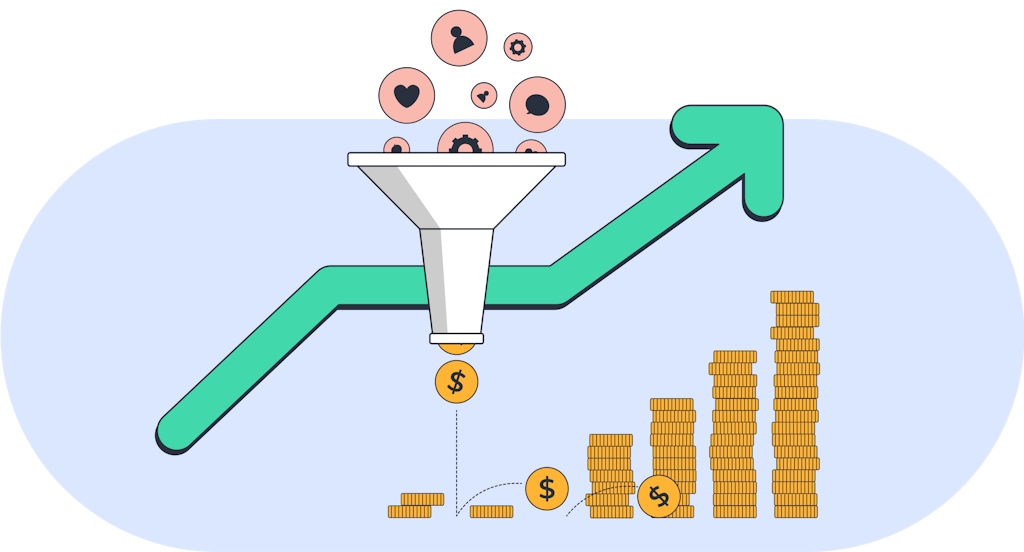
Better Messaging and Personalization:
Better Messaging and Personalization:
Ocean allows users to craft personalized messages tailored to potential customer's specific needs and interests. Businesses can foster stronger connections and improve engagement by creating compelling content that resonates with prospects.
Intent Data:
Intent Data:
With access to intent data, users can gain valuable insights into their target audience's behavior and preferences. Understanding what potential customers are actively searching for helps businesses tailor their offerings and marketing messages accordingly.
Saving Time by Saving Your Persona:
Saving Time by Saving Your Persona:
Ocean enables users to save and reuse personas, which are detailed representations of their ideal customers. This feature accelerates the lead generation process by eliminating the need to recreate customer profiles for every campaign.
Scaling Your Campaign:
Scaling Your Campaign:
Ocean's scalable platform caters to businesses of all sizes, allowing them to manage lead-generation campaigns efficiently. From startups to large enterprises, users can leverage Ocean to expand their outreach and generate leads on a broader scale.
With better targeting, personalized messaging, and access to valuable intent data, Ocean empowers users to save time while maximizing the impact of their lead-generation strategies.
Artificial Intelligence (AI) has significantly transformed the lead generation landscape, revolutionizing how businesses attract and engage potential customers. With its advanced capabilities, AI is crucial in streamlining lead generation tasks and optimizing the overall process. Some key benefits of AI in lead generation include:
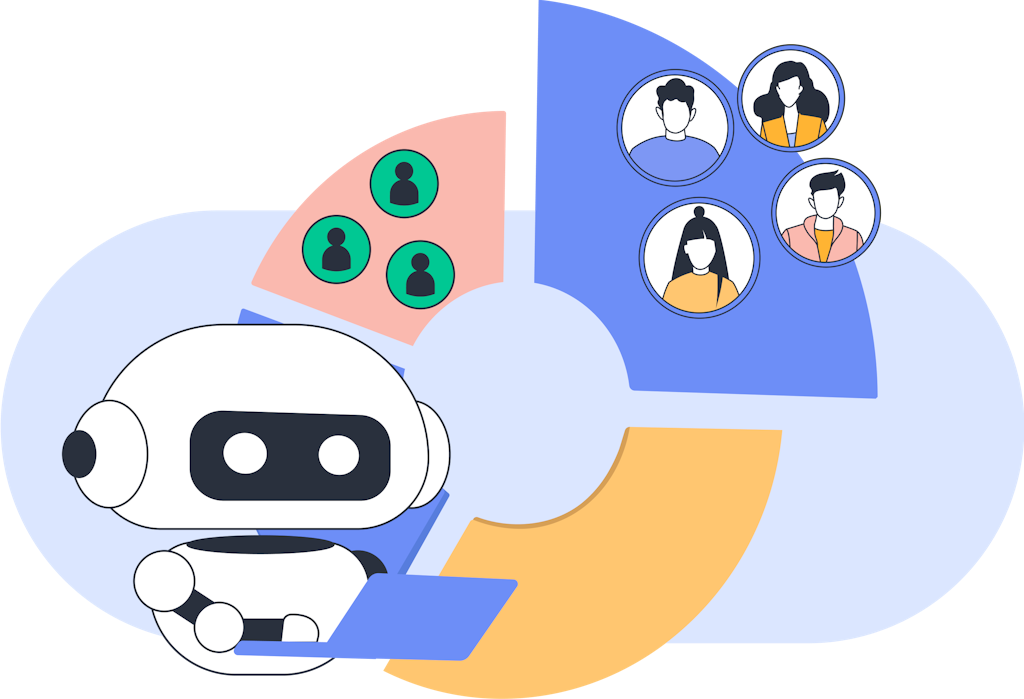
AI automates various lead generation tasks like data analysis, lead scoring, and nurturing.
AI-driven insights enable businesses to understand their target audience better.
AI leverages predictive analytics to forecast lead conversion likelihood. This enables businesses to prioritize leads with the highest potential for conversion, ensuring sales teams focus on the most valuable prospects.
AI-powered lead generation tools provide actionable insights, enabling businesses to refine their strategies and create more effective campaigns.
As AI continues to evolve, its importance in lead generation will only grow, solidifying its place as an indispensable tool for businesses seeking continuous growth and success.
How Ocean.io Use AI to Help Find the Right People
Ocean.io is a cutting-edge B2B data platform that utilizes AI technology to help businesses find the right people for their lead generation efforts. As an intelligent search engine, Ocean.io crawls hundreds of millions of web pages and public databases, employing machine learning algorithms to analyze and classify companies based on their self-descriptions.
Ocean.io's AI-powered people search feature goes beyond typical industry filters. Instead of limiting users to predefined categories, it can be configured to find virtually anything, from online video conferencing tools to hydraulics manufacturers and more. By feeding the AI a few companies with similar websites, Ocean.io can identify common patterns and find lookalike websites in its extensive database.
This AI-driven approach sets Ocean.io apart, offering a more comprehensive and flexible way to identify the right prospects for outreach campaigns. With precise and tailored search results, businesses can save time and effort while honing in on the most relevant leads.
Why Targeting is Important in Lead-Generation
Targeting is a fundamental aspect of lead generation that significantly impacts the success of a business's marketing efforts. It involves identifying and focusing on the right accounts and individuals most likely to become valuable customers. Here are five reasons why targeting is crucial in the lead-generation process:
Efficiency and Resource Optimization:
Efficiency and Resource Optimization:
Precise targeting ensures businesses invest their time, resources, and budget on prospects most likely to convert. Using tools like Ocean.io's lookalike search enables users to identify prospects that closely resemble their ideal customer profile (ICP), saving time and effort on manual filtering.
Relevance and Personalization:
Relevance and Personalization:
interests. This relevance fosters stronger connections with potential customers, increasing engagement and improving the lead-generation process.
Higher Conversion Rates:
Higher Conversion Rates:
By focusing on prospects genuinely interested in the products or services offered, businesses can significantly improve the likelihood of turning leads into loyal customers.
Account-Based Marketing (ABM):
Account-Based Marketing (ABM):
Targeting is central to Account-Based Marketing (ABM), a strategic approach focusing on individual accounts rather than a broader audience. ABM involves personalized campaigns designed to address the specific needs of each targeted account, cultivating long-term relationships and driving customer loyalty.
Long-Term Relationship Building:
Long-Term Relationship Building:
By understanding and fulfilling the unique requirements of their target audience, businesses can nurture and engage potential customers over time. This relationship-building approach fosters trust and loyalty, ensuring that customers remain satisfied and continue to support the business.
Through precise targeting, businesses can achieve sustained growth and success in the highly competitive market.
See the magic for yourself
See the magic for yourself
Why waste time on prospects that don't convert?
Get a free trial or book a personalized demo.
Start Now Why waste time on prospects that don't convert?
Get a free trial or book a personalized demo.
Free Trial
Dedicated CSM
Global Coverage
GDPR compliant